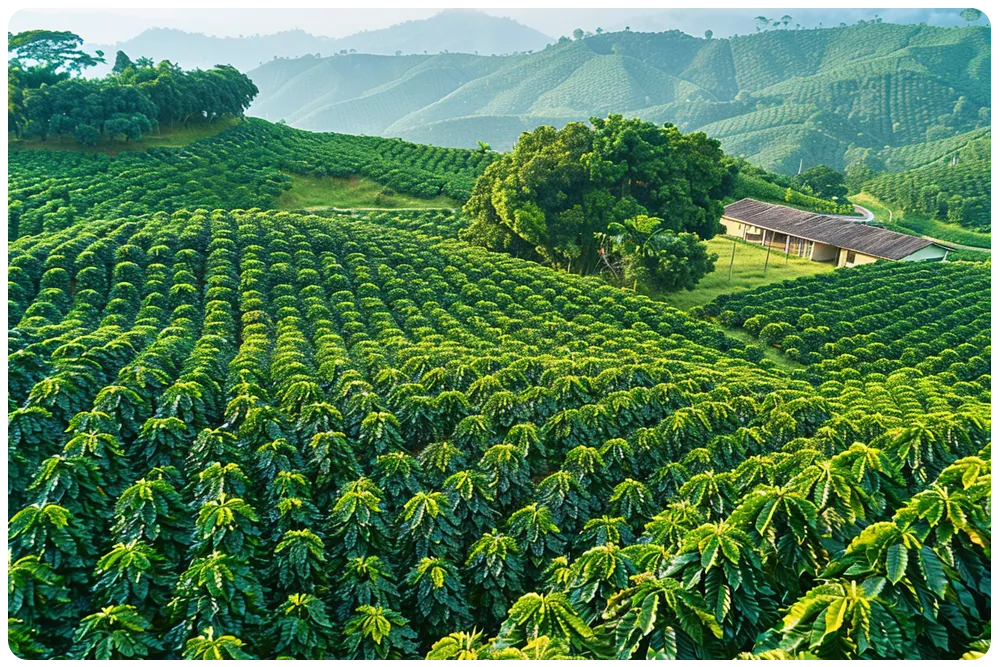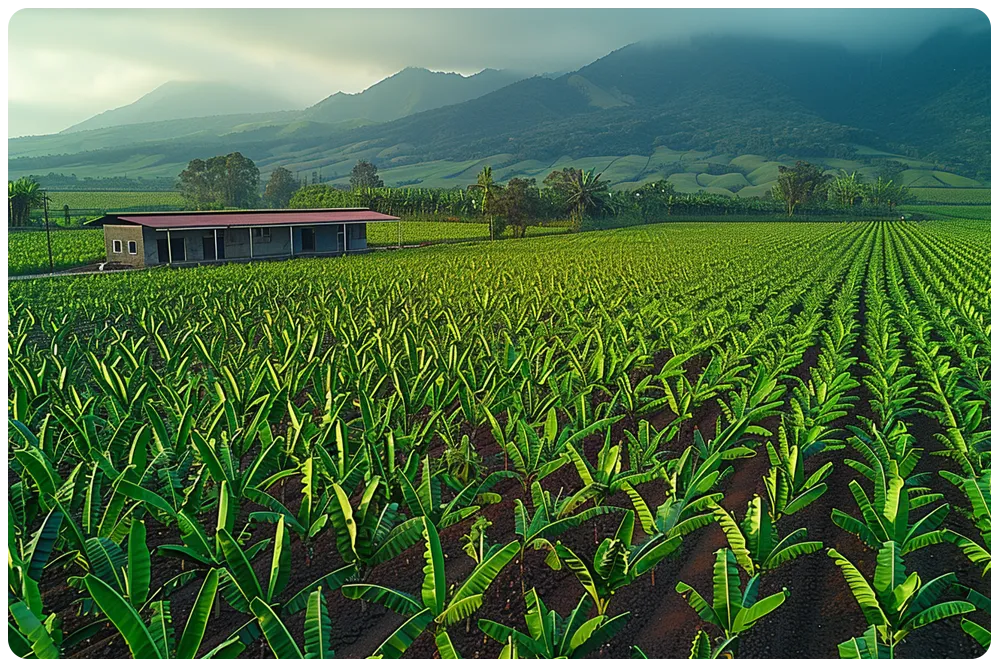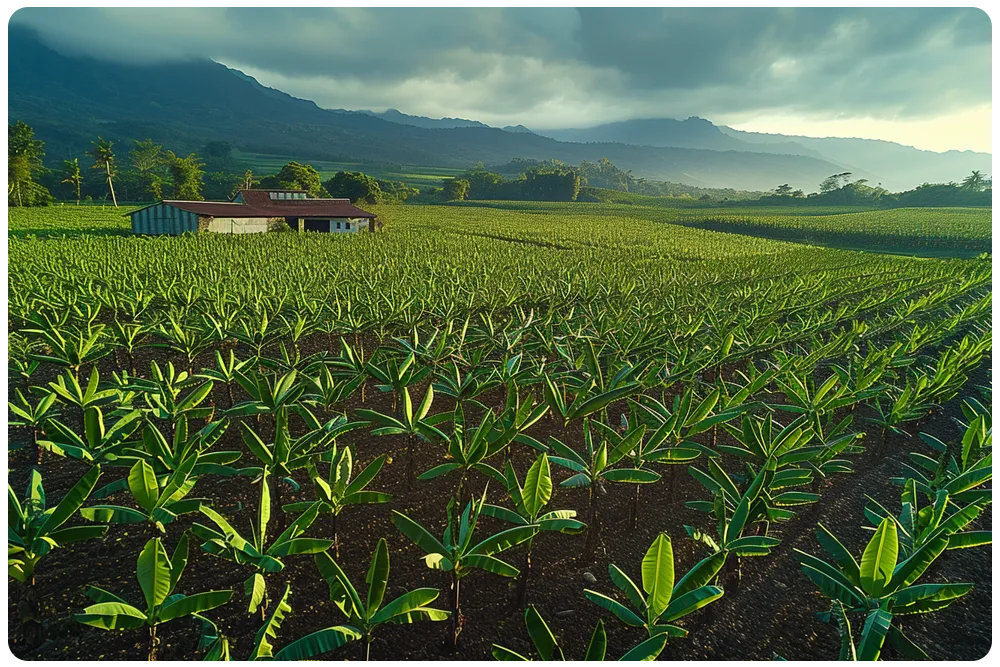Explore the innovative use of drone technology in agriculture. Discover how drones aid in monitoring crop health, enhancing farm management, and combating crop diseases.
Welcome to Drone Farm
We offer a comprehensive range of agricultural drone services. With years of experience, we’ve harnessed our expertise to deliver high-quality services to our clients. Our team provides full support at every stage. Choose us for top-tier Drone Farming experiences!

Contents
- 1. How can drones assist in monitoring crop health
- 2. Benefits of drone technology in crop health surveillance
- 3. What services do farming drones provide from seeding to harvesting
- 4. Detecting plant diseases early with drone technology
- 5. Drones enhancing efficient farming practices from seeding to harvesting
- 6. Improving yield and productivity with drone farming services.

1. How can drones assist in monitoring crop health
Unveiling the Potential of Drones in Monitor Crop Health
In the rapidly evolving world of farming, it is imperative that modern agricultural technologists and farmers uncover innovative ways to optimize their crop production. Agricultural drones play an integral role in achieving this feat. Designed with advanced technology, these tools are heralded for their efficiency and accuracy in the sector.
The application of drone technology in agriculture extends across various critical aspects of farming. One notable use is in monitoring crop health. Assessing the condition of crops accurately and timely is essential for successful farm management. This is where the application of a drone comes in.
Step-by-Step Process of Monitoring Crop Health Using Drones
A drone survey is initiated for the crop fields. Equipped with specialized cameras and sensors, the drone captures comprehensive data of the field, providing a bird’s eye view.
The drone collects detailed data on crop health metrics such as plant height, biomass, and chlorophyll levels.
Upon completion of the crop survey, the data collected by the drone is analyzed using advanced software tools. It identifies areas of the field that are performing well and those that need attention.
Through this analysis, farmers can detect early signs of crop disease, pest infestation, water stress, or nutrient deficiency.
With this precise information, farmers can implement targeted solutions to address crop illness, thereby improving crop yield and reducing farm losses.
The drone, as a technological marvel, hold great promise in transforming agricultural landscapes. By using reliable data provided by drones, farmers can attain a proactive approach in crop health management, producing a healthier, more abundant yield. As the technologies continue to mature, there is no doubt that drone utilization will become a cornerstone in agriculture, playing a critical role in driving its success.
2. Benefits of drone technology in crop health surveillance
Benefits of Drone Technology in Crop Health Surveillance
Technology’s relentless progress has led to the inception of another marvel in the guise of drones. No longer solely a cinematographer’s toy, the drone is unlocking the potential for unprecedented growth and optimization in agriculture. Some herald its contributions as a revolution, and why wouldn’t they? When it comes to crop health surveillance, drones are a game-changer.
These flying marvels offer many advantages. Let’s navigate through the benefits they confer on our crop health.
- Precision and Accuracy: Drone technology allows for meticulous observation of the fields from above. With integrated cameras and sensors, they capture high-resolution imagery, providing detailed insight into the conditions and health of crops which otherwise wouldn’t be possible. Thus enabling farmers to implement precise and effective measures accordingly.
- Detecting Crop Illness Early: One of the crucial aspects of agriculture is detecting crop diseases in the early stages to prevent widespread damage. Drones fitted with multispectral imaging sensors can identify the initial signs of disease often invisible to the human eye. Thus, timely information can lead to rapid remediation, reducing overall impacts on yield and quality.
- Efficient and Time Saving: Unlike manual surveys, a drone can cover vast areas of land in a matter of minutes, providing real-time data. Considerably faster coverage translates into timely detection and action over crop illness issues, saving both time and potential crop losses.
- Cost Effective: Drone monitoring proves cost-effective in the long run. The overheads associated with manual labor, heavy machinery or hiring a manned aircraft are eliminated or reduced by deploying a drone. Also, by enabling targeted treatment, it saves farmers from unnecessary expenditure on pesticides and fertilizers.
In summary, the dawn of agricultural drone technology possesses significant potential to revolutionize crop health surveillance. Assisting in early disease detection, affording precision health checks, and saving valuable time and resources, drones are the empowering tool that modern farmers need. The ever-evolving drone tech promises more exciting applications in farming and agriculture, continuing to enhance sustainability and profitability.


3. What services do farming drones provide from seeding to harvesting
Welcome to our extensive digital resource on the innovative uses of an agricultural drone! This section provides an in-depth view of how a single drone can redefine farming practices right from seeding to harvesting. We aim to familiarize farmers and agribusiness owners with an efficient farm management strategy that utilizes the power of drone technology.
Seeding with Drones
Traditionally, seeding was a time-consuming and labor-intensive process. Now, a drone has the capability to optimize the process exceptionally. The drone, equipped with a specialized mechanism, releases seeds into the soil with extreme precision. This smart seeding method ensures less waste. Increased Germination rate: As the seeds are planted at the right depth and density, the possibility of germination increases.
Monitoring Crop Health with Drones
One of the significant advantages of using a drone in agriculture is its potential for real-time crop monitoring. The drone is fitted with advanced sensors and cameras that capture essential data about crop health. This provides crucial insights like:
- Texture and color changes that indicate plant stress.
- Early detection of diseases and pests, helping in timely intervention.
- Estimation of plant count and size, assisting in yield prediction.
Harvesting with Drones
Although less common, drones are also finding their role in harvesting. This drone-assisted harvesting reduces the dependency on labor and enhances harvesting efficiency. The drone gently picks up ripe crops and places them in the collection area, minimizing crop damage. Embracing drone technology in farming can result in increased productivity, reduced resource wastage, and improved crop health. With a drone, the future of farming looks incredibly precise and productivity-driven. Explore more about how this technology is making farming smarter and more sustainable.
4. Detecting plant diseases early with drone technology
Detecting Plant Diseases Early with Drone Technology
Agriculture is witnessing a revolution like never before, thanks to the application of drone technology. In particular, drones have shown remarkable potential in early detection of plant diseases. This chapter dives into the method and benefits of using drones for safeguarding crop health.
Early Detection with Drone Imaging
The wave of innovation ripples across farming landscapes with the introduction of drones in disease detection. Drones, equipped with multispectral imaging cameras, can capture detailed pictures of crops. These images offer valuable insights into the plant’s health that remain invisible to the naked eye. Managing crop health has never been easier and more efficient, as with drone technology.
Step by Step Procedure
Avoiding the usage of complex technical jargon, here’s a simplified breakdown of how the drone technology benefits farm management:
The agricultural drone takes flight, equipped with an embedded multispectral imaging camera.
As it hovers over the field, the drone captures high-resolution images, capable of detecting minute changes in plants.
The drone data is then processed using specialized software, providing a detailed health map of the crops.
This invaluable information enables farmers to act promptly, treating affected plants and mitigating spread of disease.
The Far-Reaching Effects
The benefits of adopting drone technology in agriculture go beyond disease detection. The early care facilitated by drones boosts crop yields and sustains farm productivity. Moreover, it empowers farmers to make proactive decisions regarding crop illness based on concrete data. This optimizes resources, saves considerable time and significantly cuts down on unnecessary expenses.
Embracing Innovation
The takeaway is clear – integrating drone technology in farming isn’t a future fantasy, but a present reality. This game-changing tool is paving the way to a new era of upgraded farm management, optimized crop production, and sustainable agriculture.


5. Drones enhancing efficient farming practices from seeding to harvesting
How Drones Redefine Farming from Seeding to Crop Monitoring and Harvesting
Immerse yourself into the transformative world of the agricultural drone technology – an innovation that goes beyond traditional farming methods, delivering an array of benefits, from optimized planting to sophisticated crop monitoring and expedited harvesting. Let’s delve into the distinct but interconnected stages of farming where a drone can make a revolutionary difference:- Precision Seeding: Drone technology has greatly enhanced this initial phase of farming. A drone can systematically disperse seeds over a predetermined area, maintaining a consistent spacing and depth, greatly increasing the chances of germination. They reduce manual labor, and allow farmers to carry out seeding operations irrespective of topographical challenges.
- Sophisticated Crop Monitoring: During the growth phase, the drone functions as an intelligent watcher. It provides high-quality aerial imagery, facilitating farmers to access real-time data about their crops’ health. The drone’s high-resolution sensors and cameras detect signs of disease, pest infestation or nutritional deficiencies, enabling farmers to respond promptly, leading to conscientious crop illness management.
- Effective Field Management: The drone’s role is not restricted to planting and monitoring. It’s a powerful tool during critical pivots in farming, such as fertilization or irrigation. The drone’s data collection and analysis help farmers make informed decisions regarding these crucial field management tasks, that can dramatically influence harvest quality.
- Optimized Harvesting: During harvest season, the drone once again proves its worth. With its ability to map complete fields, it aids in determining the best harvesting time based on crop maturity. Enhancing efficiency and reducing waste, drone technology ensures a higher yield and better returns.
6. Improving yield and productivity with drone farming services.
Welcome to the niche world of high-efficiency agriculture, where innovative technology meets traditional farming practices. Appearance of agricultural drone technology has unlocked new possibilities, offering exceptional benefits from seeding to harvesting. In this chapter, we will delve deeply into how the application of drone farming services can drastically enhance yield and productivity.
